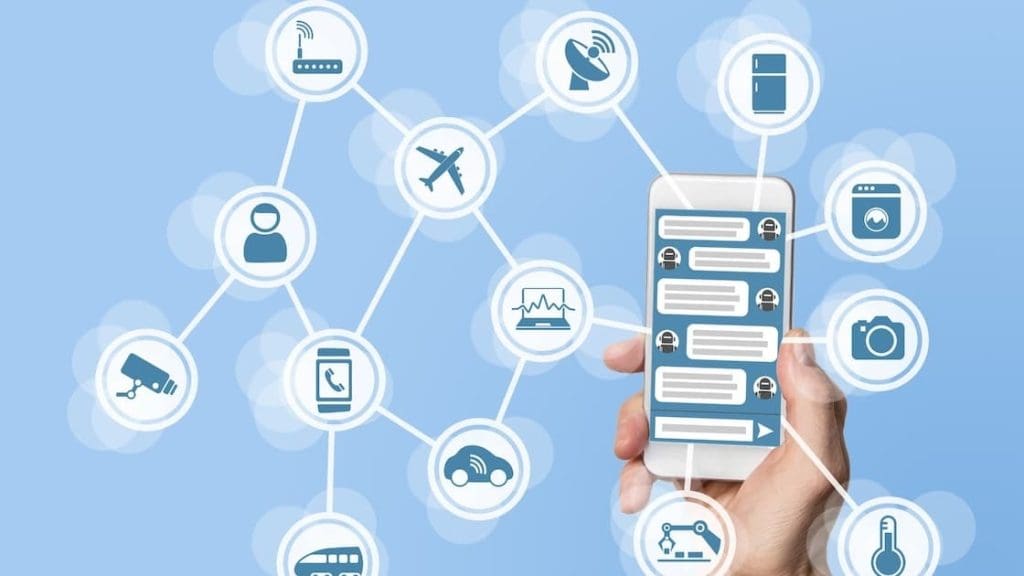By 2025, it’s estimated that 95% of interactions between brands and customers will be powered by artificial intelligence. Though the exact shape that AI interactions may take is subject to further technological advances and marketplace trends, this prediction indicates a staggering shift in the makeup of communications between organizations and consumers.

With conversational AI’s impact on customer service expected to increase significantly, brands must stay abreast of the trends and consumer preferences related to interacting with AI, particularly via chatbots. Here are 24 statistics we’ve curated that help illustrate how and why chatbots are so important for customer service.
Business Adoption of Conversational AI
Meeting evolving customer demands requires businesses to continually implement new ways to answer questions and resolve issues. To help improve the productivity of customer service teams, many brands are turning to chatbots.
- Globally, the conversational AI market is expected to grow 22% between 2020 and 2025, with the market reaching nearly $14 billion by 2025 (Deloitte)
- Chatbots presently are the number one most widespread use of AI in business, and the adoption rate of chatbots is expected to almost double over the next 2-5 years (Forbes)
- Close to 80% of CEOs either have made changes or intend to adjust how they manage engagement with clients in response to emerging conversational AI technologies (Accenture)
- A quarter of travel and hospitality companies use chatbots to enable customers to ask questions or complete bookings (Statista)
- 74% of brands that have introduced chatbots as part of their customer service strategy have been satisfied with the results (Tidio)
How Consumers Feels about Conversational AI
How do customers feel about the increasing prevalence of AI-based customer service channels, such as chatbots? These stats show that customers generally feel favorable toward chatbots, but still value human interaction for certain situations.
- Nearly half (40%) of shoppers don’t have a preference for being helped by an AI-enabled tool or a human, as long as they are able to resolve their question or issue (HubSpot)
- 35% of customers would like to see more companies use chatbots (Opus Research)
- The majority of consumers (80%) report having had positive experiences using chatbots to resolve issues (Uberall)
- Chatbots aren’t always the answer, however: among those between the ages of 35-44, 60% of U.S. adults and 61% of U.K. adults feel that brands are pushing consumers toward chatbots too quickly (CGS)
- Only 32-33% of those between the ages of 18-24 feel this way, indicating greater adoption of chatbots and conversational AI amongst younger generations
- More than 3 in 4 customers anticipate that chatbots will influence the expectations they have for companies over the next five years (Salesforce)
- If the alternative option was to wait 15 minutes for a response, 62% of customers would rather interact with a chatbot than wait for a human agent (Tidio)
Security and Data Privacy in AI-Driven Customer Service
This eBook addresses common data privacy and security concerns, giving you the information you need to alleviate data privacy concerns in your customer base.
Consumer Expectations for Chatbots
Ensuring that a customer has a successful experience with a chatbot comes down to aligning the bot with certain preferences and expectations.
- Speed is critical: when contacting a chatbot, 42% of consumers expect a response within 5 seconds. An additional 36% expect a response within 5 minutes (Salesforce)
- 68% of users who have chatted with a bot reported that a positive aspect of their experience was the speed of the bot’s response, while 42% liked that it was able to help them outside of normal business hours (Userlike)
- Be transparent: over half of users want bots to make it clear that they are, in fact, a bot (Userlike)
- Close to 80% of users want chatbots to provide the option to transfer to a human support representative (Userlike)
- Just under a third (32%) of customers value chatbots with a sunny disposition, feeling that “friendliness and approachability” is one of the top benefits (Invesp)
- The most prominent and preferred use for chatbot is to check on the status of an order, with 71% of customers indicating they prefer to use a chatbot for this as opposed to speaking with a CS representative (Tidio)
- Customers much prefer to speak with a human representative when they are making ac complaint about a product or service, with only 28% of customers preferring a chatbot in this scenario
Outcomes of Using Conversational AI for Customer Service
Conversational AI is exploding in popularity because of the tangible benefits of chatbots. Here are the results that companies have either seen or can expect to see in the future.
- 80% of executives have reported demonstrable improvements in customer satisfaction, delivery of service, and overall contact center performance as a result of implementing conversational AI (MIT Technology Review)
- It’s estimated that chatbots will be responsible for saving consumers and businesses more than 2.5 billion hours of customer service time by 2023 (Juniper Research)
- Over half (57%) of business leaders feel that conversational chatbots deliver a large ROI on minimal investment (Accenture)
- Testing has found that chatbots reduce the average handle time of customer queries by 77% (Deloitte)
- Conversational AI solutions stand to reduce the cost of providing customer service by 30% (VentureBeat)
Making Conversational AI Work For You
If these statistics are anything to go by, the future of conversational customer service is AI-based. With this being the case, brands must prepare for a world where bots can handle the lion’s share of customer inquiries.
For organizations with global, multilingual audiences, this opens up a new requirement: developing a chatbot that can handle inquiries in every language spoken by the brand’s customer base. Want to learn more about how to deploy a multilingual chatbot? Reach out to Language I/O to learn about our conversational translation technology.



